Little Sir Echo
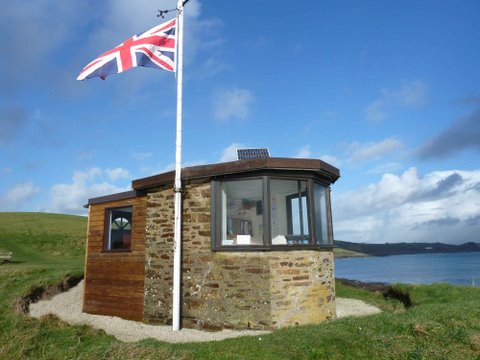 There has been much discussion lately by N.C.I. Headquarters about how to raise money, how to spend it and on what. Buildings are an obvious thing but equipment has called for more thought. What equipment do we actually need?
There has been much discussion lately by N.C.I. Headquarters about how to raise money, how to spend it and on what. Buildings are an obvious thing but equipment has called for more thought. What equipment do we actually need?
Well that varies with the Station. Very large Stations like Hamble and those going up the English Channel often have the space and electricity supply to support anything they can fit. At the other end of the scale we have Stations like ours, tiny, with no electricity or mains water, where space is at a premium and we work off solar powered batteries.
A lot of these big stations are within close proximity to major shipping routes and, although large ships do not really fall within the NCI brief, their presence must be considered when dealing with an incident which involves a small boat. Two items of equipment may be essential to these stations – Automatic Identification System (A.I.S.) and Radio Detection and Ranging (R.A.D.A.R). The first (AIS) will show a vessel on a small screen, give its course and speed and a number by which it can be identified. RADAR will enable it to be detected at night or in fog.
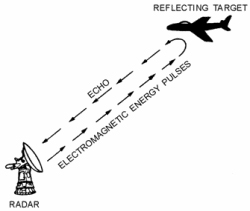 Those stations which are a long way from any normal shipping channel have no real use for either of these and I include ourselves in that category. For us shipping is so far out on the horizon that, while visible, it is often unidentifiable. It plays no part in our day to day working as we deal almost entirely with small craft, kayaks, dinghies, paddleboards etc, private yachts, swimmers and cliff walkers. I know I have missed out some categories but none that will show up on RADAR. That is another reason why it is of little use to use – it won’t work!
Those stations which are a long way from any normal shipping channel have no real use for either of these and I include ourselves in that category. For us shipping is so far out on the horizon that, while visible, it is often unidentifiable. It plays no part in our day to day working as we deal almost entirely with small craft, kayaks, dinghies, paddleboards etc, private yachts, swimmers and cliff walkers. I know I have missed out some categories but none that will show up on RADAR. That is another reason why it is of little use to use – it won’t work!
The reason it won’t work is because RADAR relies on the echo effect. Think back to when you were a small child and found yourself in a tunnel or a cave. If you shouted a few seconds later back would come your voice, bounced of a wall in front of you which you probably could not see. If you were a very sophisticated child and you had with you the necessary formula you could probably calculate how far the wall was from you even though you could not see it. Something to do with the speed of sound times twice. However, even these days, not many four year olds carry bucket, spade and calculator so you just accepted the fact that it was magic
The same thing happens with RADAR, though whereas in the cave you relied upon the bouncing back of sound with RADAR it is a radio wave which is transmitted. Though the first experiment with this was by a German called Hertz in 1895 it was not until the Second World War that it became an important military tool enabling our pilots to see the enemy in the dark and our ships to pick out the opposition in fog. Ships and aeroplanes are generally made of metal and it is the metal which acts as the reflector.
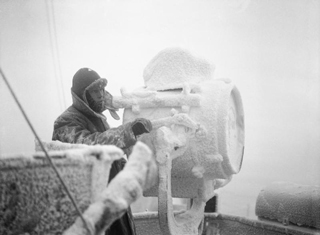 Big ships are large lumps of metal so they make a good echo reflector and show up well but the smaller they get the less of a target. A substantial lump of metal is the best reflector. By the time you get down to yachts and small boats the size of the boat limits the size of the reflector so yachts make a poor reflection and thus a poor image. On top of that yachts in particular rock from side to side which makes matters worse.
Big ships are large lumps of metal so they make a good echo reflector and show up well but the smaller they get the less of a target. A substantial lump of metal is the best reflector. By the time you get down to yachts and small boats the size of the boat limits the size of the reflector so yachts make a poor reflection and thus a poor image. On top of that yachts in particular rock from side to side which makes matters worse.
They cannot be relied upon to give a good image on a RADAR screen. Most yachts are of fibre glass or wood and neither reflects nor does rubber or human flesh. If you consider all that and apply it to our normal workload of small recreational craft and swimmers you will see we have little use for a RADAR set.
Sound Navigation and Ranging (SONAR) is not to be confused with RADAR. Sonar really is what you did as a child and shouted into a dark cave. The idea is the same, bouncing some sort of wave off an object and measuring the time taken for the return. With SONAR a sound wave is generated down into water and bounces back. Dear old Leonardo de Vinci was possibly the first man to work this out in 1490 but Nature made use of the idea first – both bats and dolphins use sound reflection to communicate and bats use it to navigate. At our Lookout we have even less use for a SONAR set as submarines in the bay are rare though they have been seen.
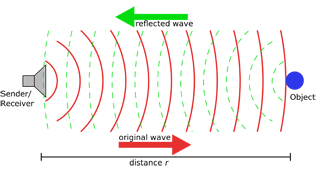 So what do we want for Christmas, though it will have gone by the time you read this. Top of our wish list would be mains electricity. We manage well with what we have, solar charging our big ‘car type’ batteries, but they won’t boil a kettle! Neither can we have heat. True, we do not open in winter as there is so little activity in the bay or on the beaches but it can be cold early in the year when we open at Easter. It would also allow us to have wipers for our windows.
So what do we want for Christmas, though it will have gone by the time you read this. Top of our wish list would be mains electricity. We manage well with what we have, solar charging our big ‘car type’ batteries, but they won’t boil a kettle! Neither can we have heat. True, we do not open in winter as there is so little activity in the bay or on the beaches but it can be cold early in the year when we open at Easter. It would also allow us to have wipers for our windows.
Battery power will not support the ‘bus sized wipers we would need so, for the time need so, for the time being, we will have to put up with the somewhat blurred vision in driving rain and the occasional mad rush outside to wipe off the worst. Mains power would give us a better telephone system. At the moment we use a battery powered one and these are becoming a thing of the past. We managed to source a new one at the beginning of this year but what happens when that fails?
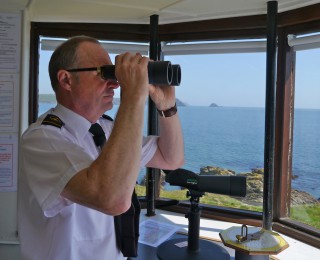 A normal watch is a single Watchkeeper so our one set of binoculars does the job backed up by our powerful telescope. New recruits have to train though, and some of this time is spent in the Lookout with a qualified Watchkeeper. Ever tried two people using one set of binoculars? One eyepiece each! No, a second set would be useful and also make a backup in the event of failure of the one we have.
A normal watch is a single Watchkeeper so our one set of binoculars does the job backed up by our powerful telescope. New recruits have to train though, and some of this time is spent in the Lookout with a qualified Watchkeeper. Ever tried two people using one set of binoculars? One eyepiece each! No, a second set would be useful and also make a backup in the event of failure of the one we have.
So we are not greedy we manage quite well with what we have – good basic equipment and a fund of goodwill from our dedicated members. More than money we need people so, perhaps, I should have said that for Christmas we could do with a box of another half dozen dedicated volunteers. We are not fussy about their sex or age – just that they work. So search your minds and see if you can think of anyone who can help. You can find out more about it by speaking to Sue on 01872 530500 or Robert on 501670
Pictures by courtesy of Wikipedia

